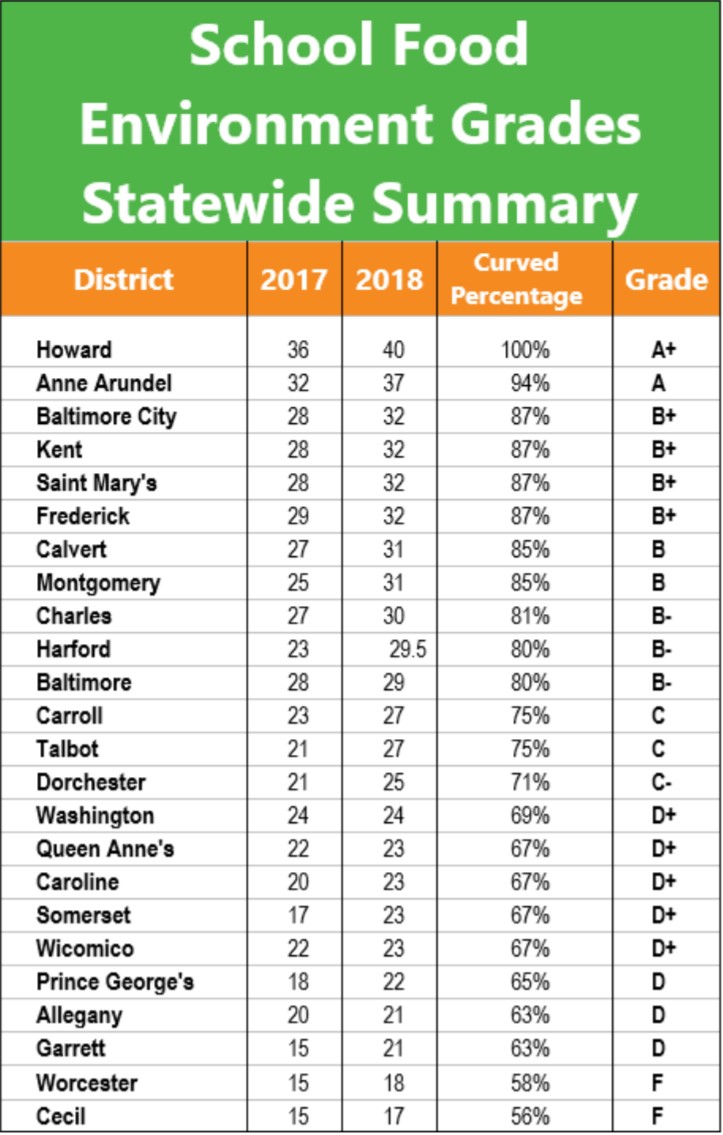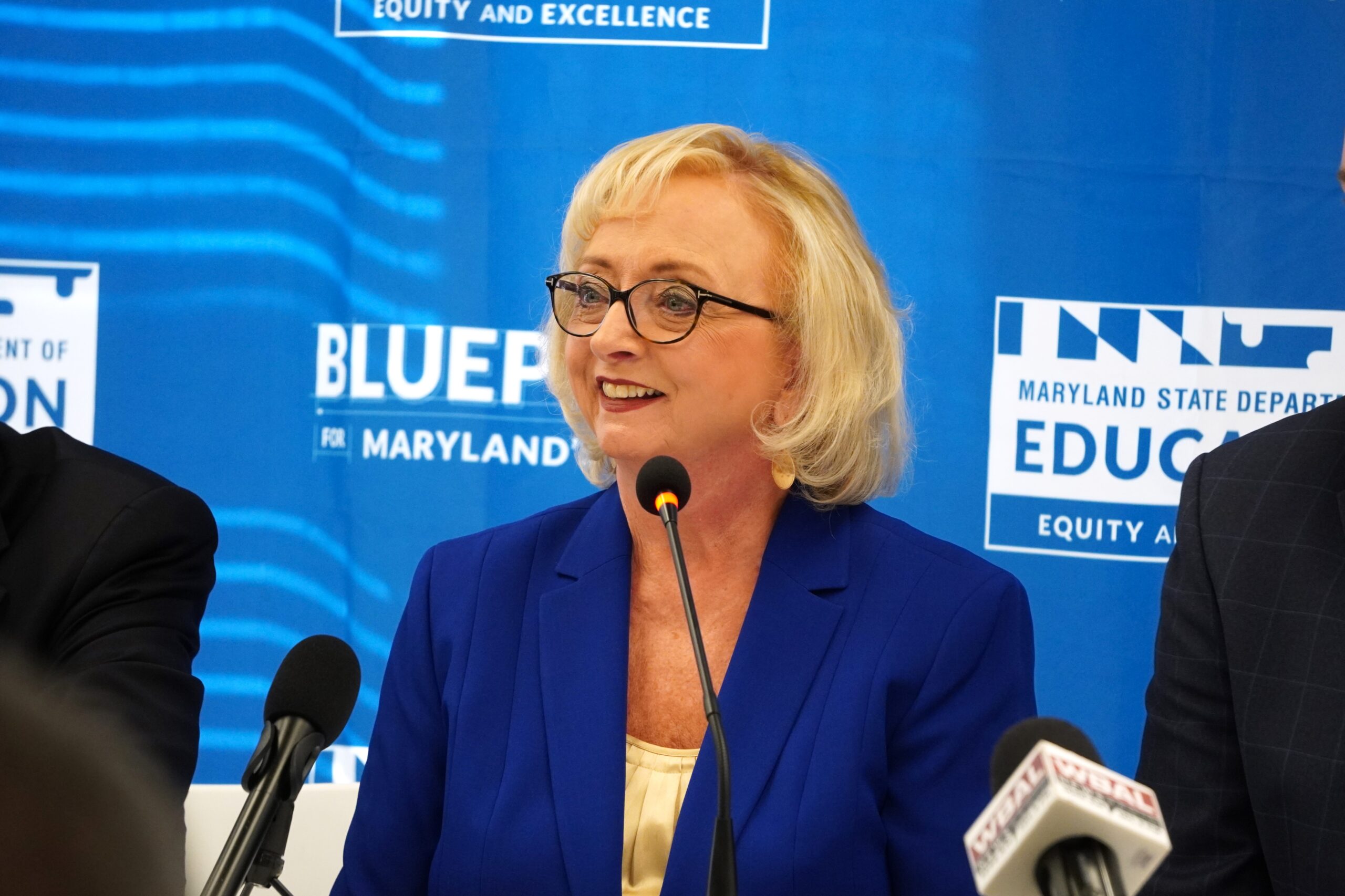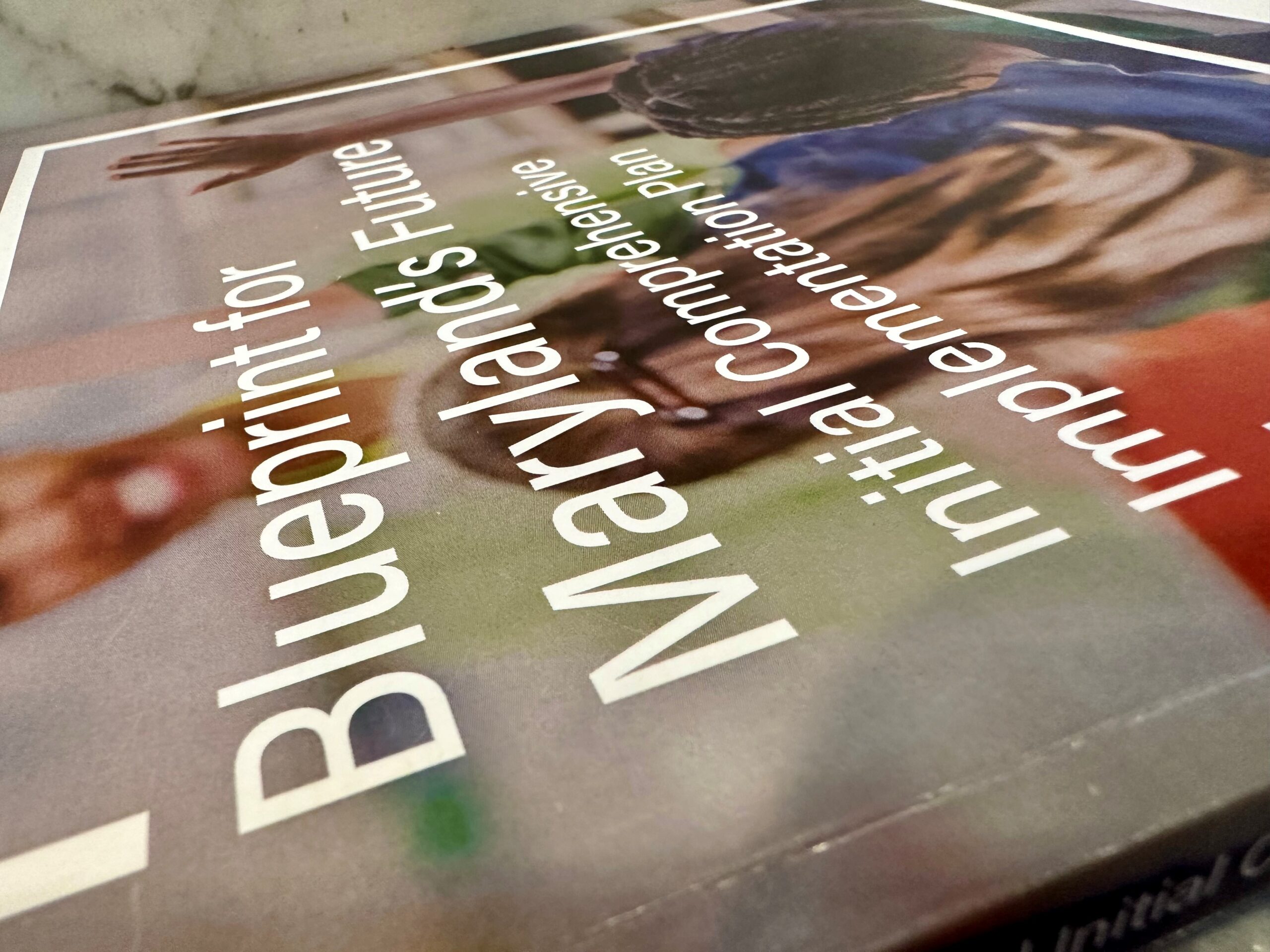How Maryland’s Counties Fared in School Food Report Card
The healthiest school food in Maryland can be found in Howard County, Healthy School Food Maryland announced Tuesday.
The organization has judged and scored school cafeteria offerings across the state since 2016. And Howard has found itself consistently at the top, gobbling up points when assessed for transparency in nutritional information, farm-to-school offerings, and availability of salads and fresh fruit.
In 2018, all school systems in the state increased or maintained their scores in Healthy School Food’s analysis from a year earlier. Combined, the school systems saw an 85.5 point increase, in large part due to the addition of a category rating the availability of vegetarian meals. Statewide, school systems earned 45 percent of the points possible in that category.
 Baltimore City Public Schools was the only school system in the state to score four out of four points for plant-based options. High performance in that category led city schools to increase its overall grade to a B+. The system was ranked third in the state.
Baltimore City Public Schools was the only school system in the state to score four out of four points for plant-based options. High performance in that category led city schools to increase its overall grade to a B+. The system was ranked third in the state.
Howard County Public Schools was the only system to receive an A+ grade. Anne Arundel County Public Schools was close behind with an “A.”
Frederick, Kent and St. Mary’s counties also tied with Baltimore City for third place.
Of the state’s remaining largest school districts, Montgomery County earned a “B,” Prince George’s County earned a “D” and Baltimore County earned a “B-.”
The grades are based on a rubric of 13 items, with scores ranging from 0-4. Other categories include reducing sugar; access to potable water and water bottles; use of artificial colors, flavors and other chemical additives; scratch cooking; variety and repetition of meals; healthy vending machine options; existence of wellness committees; and policies on food and beverage marketing.
In the organization’s 2018 analysis, only two counties, Frederick and Kent, received the highest scores on clean water access for expressly allowing personal water bottles and putting water bottles on school supply lists.
Since 2017, testing has revealed at least 3,000 school water fixtures with lead levels over 20 parts per billion. Legislation passed this year in the General Assembly toughened reporting requirements for elevated lead levels in school water, requires outlets with elevated levels to be repaired or turned off and prioritizes money from the $30 million Healthy School Facility Fund for water fixture repairs.
“Most schools have some lead in their plumbing or fixtures; and since we now know that even very low levels of lead in blood can cause cognitive, behavioral and other health problems, students should be allowed and encouraged to access water at certified filtered filling stations,” Dr. Mia Sidhu, a pediatrician and Healthy School Food Maryland board member said.
Statewide, school systems earned 55 of 96 possible points for water access in the organization’s analysis.
The full report is online.
Did someone forward this to you?
Get your own daily morning news roundup in your inbox. Free. Sign up here.




 Creative Commons Attribution
Creative Commons Attribution